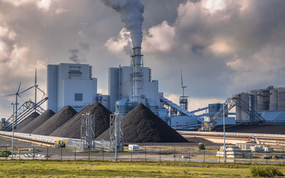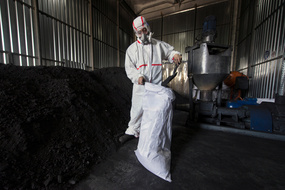Russian metallurgists proposed to dissolve the ash waste of thermal power stations with hydrochloric acid at high pressure. The resulting compounds can be used for water treatment at water utilities and thermal power stations themselves. The method has already shown effective deposition of impurities in water from Moskva river. The description of the technology is published by scientists from NUST MISIS and a number of other universities in Journal Cleaner Production. The research is funded Russian science Foundation under the Presidential Program for Research Projects.
Although the share of coal-fired generation in Russia has been gradually decreasing since the 90s, it still makes up a large part of the country’s entire energy sector. In 2019, Russian thermal power stations generated more than 60% of all electricity produced in the country. In addition, the current volume of coal energy will not be reduced to prevent the Russian economy from depending on gas. However, this area is one of the least environmentally friendly. Coal-fired stations annually produce
Scientists are looking for ways to utilize and recycle waste, focusing on the extraction of non-ferrous metals, such as aluminum, one of the main components of ash. This would help to increase the environmental friendliness of thermal power plants: one can get rid of already accumulated solid waste and prevent the formation of new ones. In their work, scientists have proposed a fundamentally new method for processing ash, which would allow obtaining reagents for water purification from waste.
Scientists treated the ash with superheated hydrochloric acid, the temperature of which was significantly higher than its boiling point. This can be achieved using an autoclave. The reaction produces aluminum chloride. The researchers selected special conditions under which more than 95% of the metal transformed into solution. In this form, it coagulates, that is, it precipitates suspended particles. Using the example of water from Moskva river, scientists have shown the effectiveness of treatment with this reagent. The resulting samples met WHO standards for drinking water: they were free of heavy metal ions, and the turbidity and color values were at an acceptable level.
“To increase the ash utilization rate from the current 8% to the planned 50% by 2035, it is necessary to learn how to effectively extract non-ferrous metals and their compounds from waste. We focused on the extraction of aluminum and the production of a reagent for water purification. This way we not only get rid of ash waste, but also reduce the cost of coagulant by 25% compared to industrial analogues”, comments Dmitry Valeev, head of the research project, researcher at NUST MISIS and senior researcher at Baikov Institute of Metallurgy and Materials Science, Russian Academy of Sciences.
Scientists plan to participate in the development of a pilot plant for the production of coagulant for the needs of one of the largest heat generating companies in Siberia, TGC-11, in Omsk. Earlier, the same research group proposed expanding the Russian alumina market with ash waste, as well as separating iron and carbon concentrate from the ash.





